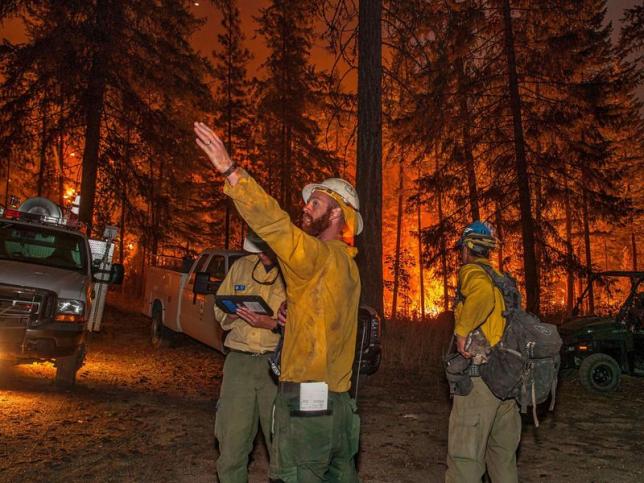
Firefighters prepare to battle the Wolverine wildfire near Chelan, Washington, in this U.S. Forest Service picture taken August 16, 2015. REUTERS/US FOREST SERVICE/HANDOUT
npr.org - by Lucy Perkins - August 17, 2015
The Army is deploying 200 soldiers to help fight wildfires that are burning through about 1.1 million acres across the Western United States. That's according to a press release from the National Interagency Fire Center in Boise, Idaho.
"It's been nine years since wildfire was so widespread all at once that active military troops joined firefighters battling blazes," NPR's Howard Berkes reports. "Four military C-130 cargo planes are also in use as air tankers."
A group at the fire center in Boise submitted the request to the Department of Defense, according to the press release, which cites about 95 large wildfires in seven states.
The DOD approved deployment of soldiers from Joint Base Lewis-McChord in Washington. They'll be organized into 10 crews, all sent to the same fire, which has yet to be announced.
Recent Comments